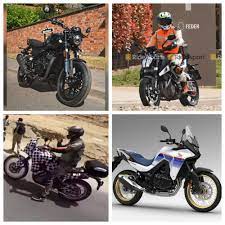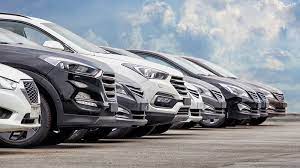As we enter the year 2023, the world is seeing a shift in the popularity of car and bike brands by country. With advances in technology and a growing focus on sustainability, consumers are becoming more discerning about the vehicles they choose to own and operate.
In the United Kingdom, the most popular car brand is still Ford, followed closely by Volkswagen and Vauxhall. These three brands have been dominating the UK market for years, offering reliable vehicles at affordable prices. However, with the increasing demand for electric and hybrid vehicles, newer players like Tesla, Nissan and BMW are also gaining traction in the country.
Moving over to the United States, the landscape is quite different. The most popular car brand in the US is currently Toyota, with a market share of almost 15%. This is followed by Ford and Chevrolet, which have been long-standing favorites of American drivers. In terms of bikes, Harley Davidson remains the most popular brand in the US, with Indian and Yamaha following behind.
In Europe, the most popular car brand varies by country. In Germany, the home of the automotive industry, Volkswagen is still the leader, followed by Mercedes-Benz and Audi. However, in France, Renault reigns supreme, with Peugeot and Citroen close behind. In Italy, Fiat is still the most popular brand, although it faces increasing competition from Volkswagen and Ford.
In terms of bikes, Europe has a strong affinity for Italian brands. Ducati, Aprilia and Moto Gazzi are all popular choices, particularly in Italy itself. However, BMW and KTM have also been gaining popularity in recent years, with a focus on adventure touring and sport riding.

car and bike brands by country in 2023
Moving over to Asia, the picture is again quite different. In India, the most popular car brand is Maruti Suzuki, followed by Hyundai and Tata Motors. These brands offer affordable, reliable vehicles that are well-suited to Indian road conditions. In China, the most popular car brand is currently Greely, followed by BYD and Changing. However, with the Chinese government’s push towards electric vehicles, newer players like NIO and Peng are also gaining momentum.
In terms of bikes, Japan remains the dominant force in Asia. Honda, Yamaha and Suzuki are all popular choices, particularly in their home country. However, there are also some emerging players in the region. In India, Bajaj and Hero MotoCorp are growing in popularity, while in China, brands like Couto and Lancin are starting to gain traction.
When it comes to luxury car brands, the picture is again quite different. In the UK, the most popular luxury car brand is currently BMW, followed by Mercedes-Benz and Audi. These brands offer a mix of performance and prestige, making them popular choices among British drivers. In the US, the most popular luxury car brand is currently Mercedes-Benz, with BMW and Lexus following closely behind. In Europe, the most popular luxury car brands vary by country, with BMW and Mercedes-Benz being popular choices in Germany, while Audi and Porsche are more popular in France.
Finally, in terms of sports car brands, there are some clear favorites around the world. In the UK, the most popular sports car brand is currently Porsche, followed by Jaguar and Aston Martin. In the US, Chevrolet’s Corvette remains a popular choice, with Porsche and Audi also gaining popularity. In Europe, the most popular sports car brands vary by country, with Ferrari being a popular choice in Italy, Porsche in Germany, and Aston Martin in the UK.
Overall, the popularity of car and bike brands varies greatly by country and region. However, some clear patterns emerge. In developed countries, established brands like Ford, Toyota and Volkswagen continue to dominate, while in emerging markets, local brands like Maruti Suzuki and Greely are gaining momentum. As the world shifts towards electric and hybrid vehicles, newer players like Tesla, NIO and Peng are also gaining traction.
It’s important to note that consumer preferences and trends are constantly changing, so it’s difficult to predict which brands will be popular in the future. However, there are some key factors that are likely to influence consumer choices.

The car and bike brands by country in 2023
One of the biggest trends in the automotive industry right now is the move towards electric and hybrid vehicles. With concerns about climate change and air pollution, consumers are increasingly looking for more sustainable options. This has led to a surge in popularity for brands like Tesla, which specializes in electric vehicles. Other established brands like Toyota and BMW are also investing heavily in electric and hybrid technology, which is likely to make them more appealing to consumers in the long run.
Another factor that is likely to influence consumer preferences is the rise of autonomous driving technology. With advances in artificial intelligence and machine learning, self-driving cars are becoming more of a reality. This could lead to a shift in consumer preferences towards brands that are at the forefront of this technology, such as Tesla and Google’s WeMo.
Finally, consumer preferences are also likely to be influenced by factors like price, performance, and design. While some consumers prioritize sustainability and technology, others may be more focused on factors like speed and style. As such, it’s important for car and bike brands to offer a wide range of options that cater to different consumer preferences.
The popularity of car and bike brands varies greatly by country and region. Established brands like Ford, Toyota and Volkswagen continue to dominate in developed countries, while local brands like Maruti Suzuki and Greely are gaining momentum in emerging markets. The rise of electric and hybrid technology is likely to influence consumer preferences in the coming years, as well as the development of autonomous driving technology. Ultimately, it’s up to car and bike brands to stay ahead of these trends and offer a range of options that appeal to different consumer preferences.
Moreover, the COVID-19 pandemic has also had an impact on the automotive industry, with many consumers shifting towards personal vehicles as a safer mode of transportation. This has led to an increased demand for cars and bikes, particularly in countries where public transportation is not as reliable. As such, car and bike brands that offer affordable and reliable options are likely to see continued success in the coming years.
Another trend that is worth noting is the increasing popularity of shared mobility services, such as ride-hailing and car-sharing. While this trend is still in its early stages, it is likely to have an impact on the automotive industry in the long run. As more consumers opt for shared mobility options, car and bike brands may need to adapt their business models to stay relevant. For example, they may need to focus more on fleet sales and partnerships with shared mobility providers.
It’s also important to consider the impact of government policies and regulations on the automotive industry. Many countries have set targets for reducing carbon emissions and promoting the use of electric and hybrid vehicles. This has led to incentives for consumers to purchase these types of vehicles, as well as regulations that restrict the use of petrol and diesel vehicles in certain areas. As such, car and bike brands that are at the forefront of sustainable technology are likely to benefit from these policies in the coming years.
In conclusion
The popularity of car and bike brands is influenced by a wide range of factors, including technology, sustainability, price, performance, and design. While established brands like Ford, Toyota and Volkswagen continue to dominate in many countries, newer players like Tesla, NIO and Xpeng are gaining momentum with their focus on electric and hybrid technology. As the automotive industry continues to evolve, it will be interesting to see which brands are able to stay ahead of the curve and cater to changing consumer preferences.















